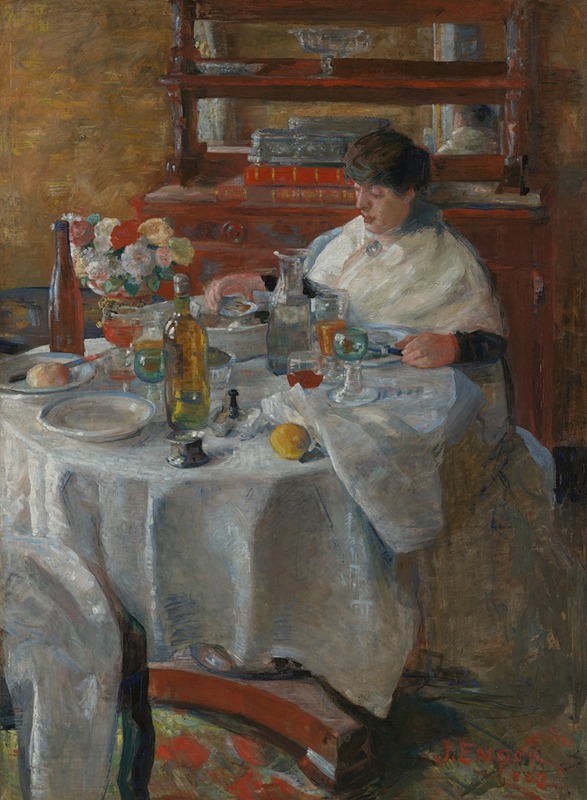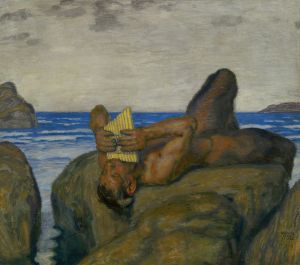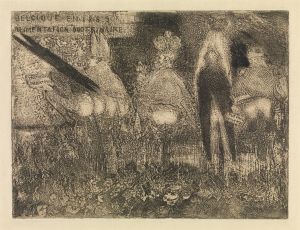
The Oyster Eater
A hand-painted replica of James Ensor’s masterpiece The Oyster Eater, meticulously crafted by professional artists to capture the true essence of the original. Each piece is created with museum-quality canvas and rare mineral pigments, carefully painted by experienced artists with delicate brushstrokes and rich, layered colors to perfectly recreate the texture of the original artwork. Unlike machine-printed reproductions, this hand-painted version brings the painting to life, infused with the artist’s emotions and skill in every stroke. Whether for personal collection or home decoration, it instantly elevates the artistic atmosphere of any space.
"The Oyster Eater" is a notable painting by the Belgian artist James Ensor, created in 1882. Ensor, who was born in 1860 in Ostend, Belgium, is recognized for his unique contribution to the Symbolist movement and his influence on later Expressionist artists. His work often features themes of satire, grotesque imagery, and a vivid use of color, which are evident in this particular painting.
"The Oyster Eater" is an oil on canvas painting that measures approximately 200 cm by 250 cm. It is one of Ensor's early masterpieces and is housed in the Royal Museum of Fine Arts in Antwerp, Belgium. The painting depicts a young woman seated at a table, indulging in a plate of oysters. The setting is a domestic interior, characterized by a richly decorated table and a sense of intimacy. The woman, believed to be Ensor's sister, Mitche, is portrayed with a sense of realism and attention to detail that highlights Ensor's skill in capturing the nuances of human expression and the textures of the objects around her.
The painting is significant for its vibrant use of color and light, which was somewhat unconventional at the time. Ensor employs a bright palette, with bold contrasts between the reds, blues, and whites, creating a lively and engaging scene. This use of color is indicative of Ensor's departure from the more subdued tones of traditional academic painting, aligning him with the avant-garde movements of his time.
"The Oyster Eater" also reflects Ensor's interest in the themes of indulgence and the mundane aspects of daily life. The act of eating oysters, a luxury food item, suggests themes of sensuality and pleasure. Ensor's focus on such a scene can be seen as a commentary on the bourgeois lifestyle, a subject he often explored in his work. The painting's composition, with its close-up view and attention to detail, invites the viewer to partake in the intimate moment, blurring the lines between observer and participant.
Ensor's work, including "The Oyster Eater," was initially met with mixed reactions. During the late 19th century, his style was considered radical, and he faced criticism from the conservative art establishment in Belgium. However, over time, his innovative approach and unique vision gained recognition, and he became a pivotal figure in the development of modern art. Today, Ensor is celebrated for his ability to blend realism with fantastical elements, creating works that are both visually striking and thought-provoking.
In summary, "The Oyster Eater" is a key work in James Ensor's oeuvre, showcasing his mastery of color, light, and composition. It captures a moment of everyday life with a sense of vibrancy and depth that is characteristic of Ensor's artistic vision. The painting remains an important piece in the study of late 19th-century art, reflecting the shifting dynamics of the period and Ensor's role in challenging artistic conventions.


















